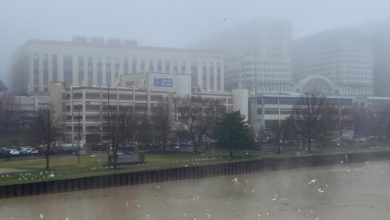In western Washington state, heavy late-December snowstorms gave way to January rain and flooding that caused three major rivers to overflow their banks.
|
It is no secret that the Pacific Northwest is a rainy region. But locals have typically referred to these severe floods as “Hundred Year Floods,” meaning they only occur every hundred years. Yet for the past three years, Washington residents have experienced a severe flood each winter. Has the “Hundred Year Flood” become an annual event? And if so, why?
Research suggests three factors that have contributed to these more frequent, more severe floods in Washington: Development, logging and climate change.
Logging and development play an important role in turning heavy rainfall into a flood. Denser forests slow down the rain; areas that had been clear-cut in Lewis County became landslides during the 2007 floods. Development paves over marshes and soil that can soak up the water. And climate change—itself fueled by untrammeled capitalist development—has lead to heavier winter storms in the western part of the state.
Much of the development has been in floodplains—the areas where rivers flooded out of their banks. If you place homes, businesses, parking lots and roads in a floodplain, the water will not be able to soak down into the ground.
A recent study by the U.S. Geological Survey shows that the rate of land conversion in the Puget Sound region is the fastest in the United States. Between 1973 and 2000, clear-cutting decreased forest cover by 10 percent while development—paving over land—increased 7 percent.
Last year, University of Washington geologist David Montgomery testified before the state legislature: “It appears to me that the flooding and landslide problems … stem from the combination of an unusually large storm and decades of risky behavior both in upland forestry practices and downstream floodplain development. The combination put people at risk and will do so again under the present system.”
Floodplain development is also bad for endangered species, such as salmon. Last year, the Earthjustice nonprofit law firm won a case that lead to a National Marine Fisheries Service call to end floodplain development. According to Earthustice lawyer Jan Hasselman: “From a salmon’s perspective, the science tells us that we need to stop building in floodplain habitats and allow rivers to do what they always want to do, which is periodically expand their banks and spread out. It also makes sense from the perspective of safety and emergency management to keep out of the same places.”
So why do clear-cutting and floodplain development continue, if scientists and the government know the danger they pose to people and the environment?
The answer lies in the profits-before-people system known as capitalism. Development and logging are profitable. If a city is already built, developers look for undeveloped land to build homes and businesses to make more money. The logging industry finds it cheaper and easier to clear-cut whole swathes of forest rather than selectively harvesting wood.
The real solution is socialism—an economic system based on planning to meet peoples’ needs, where the profit motive has been eliminated. Socialism is a necessary prerequisite to make truly sustainable development possible, where human needs are taken care of, while at the same time protecting the environment for future generations.







